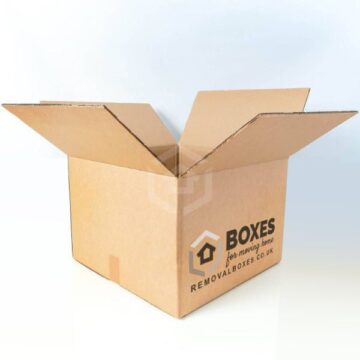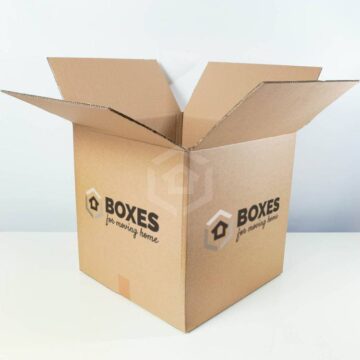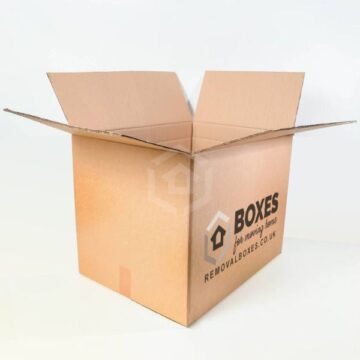How to Safely Pack Plants
Moving can be a stressful experience for both people and plants. Houseplants, with their delicate foliage and complex root systems, require special attention to ensure they arrive at your new home healthy and intact. Properly packing and transporting plants using removal boxes can make all the difference. This guide will walk you through the process of safely packing plants for a move, offering tips, techniques, and best practices to ensure your leafy friends survive the journey.
Understanding the Challenges of Moving Plants
Plants are living organisms that can be sensitive to changes in their environment. Moving them involves several challenges:
- Temperature Fluctuations: Plants can be sensitive to extreme temperatures. Cold drafts or intense heat can damage or even kill them.
- Physical Damage: The jostling and movement during transportation can break stems, leaves, and roots.
- Light and Water: Plants need consistent access to light and water. Long periods without either can be harmful.
- Shock: Moving can cause stress to plants, which can lead to shock, making them more susceptible to disease and damage.
Preparing Plants for the Move
Before you start packing, there are several steps you should take to prepare your plants for the move:
1. Prune and Clean
- Pruning: Trim any dead or excess foliage to make the plants more manageable. This reduces the risk of breakage and helps the plant conserve energy during the move.
- Cleaning: Remove any dust, pests, or dead leaves. This will help prevent the spread of pests and diseases during the move.
2. Watering
- Timing: Water your plants a couple of days before the move. This ensures they are well-hydrated but not soggy, which can prevent root rot and make the plants easier to handle.
3. Check for Pests
- Inspection: Thoroughly inspect your plants for pests such as aphids, spider mites, and scale insects. Treat any infestations before moving to avoid transferring pests to your new home.
Choosing the Right Removal Boxes
The type of removal boxes you use is crucial to the safe transport of your plants. Here are some tips on selecting the right boxes:
1. Size Matters
- Appropriate Size: Choose boxes that are slightly larger than the pots. This provides enough space for padding and ensures the plant is secure but not cramped.
2. Strength and Durability
- Sturdy Boxes: Use strong, double-walled boxes to provide extra protection and support for heavier plants and to withstand any impacts during the move.
Packing Materials
Having the right packing materials is essential to protect your plants during the move. Here’s what you’ll need:
1. Packing Paper and Bubble Wrap
- Protection: Use packing paper to wrap around the pots and bubble wrap for extra cushioning around the plants. This helps to prevent breakage and reduces movement within the box.
2. Plastic Bags
- Containment: Use plastic bags to wrap around the base of the plant and the pot to prevent soil from spilling out during the move.
3. Packing Tape
- Securing: Strong packing tape is necessary to secure the boxes and keep the packing materials in place.
4. Labels
- Identification: Clearly label each box with “Fragile” and “This Side Up” to ensure they are handled with care.
-
%22%20transform%3D%22translate(.7%20.7)%20scale(1.40625)%22%20fill-opacity%3D%22.5%22%3E%3Cellipse%20fill%3D%22%23d69755%22%20rx%3D%221%22%20ry%3D%221%22%20transform%3D%22rotate(96.5%205%20129.3)%20scale(65.85285%2084.21045)%22%2F%3E%3Cellipse%20fill%3D%22%23fff%22%20rx%3D%221%22%20ry%3D%221%22%20transform%3D%22matrix(-38.99609%2045.5854%20-189.04115%20-161.7155%2052.4%20215.4)%22%2F%3E%3Cellipse%20fill%3D%22%23fff%22%20rx%3D%221%22%20ry%3D%221%22%20transform%3D%22matrix(98.80643%20-19.02712%207.37616%2038.30383%2032.6%2020.4)%22%2F%3E%3Cellipse%20fill%3D%22%23fff%22%20cx%3D%22112%22%20cy%3D%22236%22%20rx%3D%22255%22%20ry%3D%2223%22%2F%3E%3C%2Fg%3E%3C%2Fsvg%3E) Medium Moving Box£4.25 (INC VAT)
Medium Moving Box£4.25 (INC VAT)
-
%27%20fill-opacity%3D%27.5%27%3E%3Cellipse%20fill%3D%22%23c28a33%22%20fill-opacity%3D%22.5%22%20rx%3D%221%22%20ry%3D%221%22%20transform%3D%22matrix(48.28827%20105.2026%20-77.28766%2035.47524%20164.1%20192)%22%2F%3E%3Cellipse%20fill%3D%22%23eef8ff%22%20fill-opacity%3D%22.5%22%20rx%3D%221%22%20ry%3D%221%22%20transform%3D%22matrix(-2.04473%2043.89677%20-358.20536%20-16.68536%20122.6%20325.5)%22%2F%3E%3Cellipse%20fill%3D%22%23eff6ff%22%20fill-opacity%3D%22.5%22%20rx%3D%221%22%20ry%3D%221%22%20transform%3D%22matrix(-1.79619%2039.73287%20-347.073%20-15.68999%20224.1%2026.9)%22%2F%3E%3Cellipse%20fill%3D%22%23edf2fc%22%20fill-opacity%3D%22.5%22%20rx%3D%221%22%20ry%3D%221%22%20transform%3D%22matrix(21.24272%20273.37426%20-65.67904%205.10363%20.7%20188.4)%22%2F%3E%3C%2Fg%3E%3C%2Fsvg%3E) Large Moving Box£4.75 (INC VAT)
Large Moving Box£4.75 (INC VAT)
-
%27%20fill-opacity%3D%27.5%27%3E%3Cpath%20fill%3D%22%23ef9650%22%20fill-opacity%3D%22.5%22%20d%3D%22M63.3%20269.2l16.2-185%20187.7%2016.5L251%20285.6z%22%2F%3E%3Cellipse%20fill%3D%22%23f2ffff%22%20fill-opacity%3D%22.5%22%20rx%3D%221%22%20ry%3D%221%22%20transform%3D%22matrix(74.55583%20350.75762%20-65.74552%2013.97464%2024.6%20244.4)%22%2F%3E%3Cellipse%20fill%3D%22%23f0feff%22%20fill-opacity%3D%22.5%22%20rx%3D%221%22%20ry%3D%221%22%20transform%3D%22matrix(10.88007%20-65.72116%20302.08207%2050.00936%20192%2018)%22%2F%3E%3Cellipse%20fill%3D%22%23f4ffff%22%20fill-opacity%3D%22.5%22%20rx%3D%221%22%20ry%3D%221%22%20transform%3D%22matrix(-14.34572%20-67.49131%20350.75762%20-74.55583%20261.7%20359.3)%22%2F%3E%3C%2Fg%3E%3C%2Fsvg%3E) Extra Large Moving Box£5.00 (INC VAT)
Extra Large Moving Box£5.00 (INC VAT)
Step-by-Step Guide to Packing Plants
Now that you have all the necessary materials, follow these steps to safely pack your plants:
Step 1: Prepare the Box
- Line the Box: Line the bottom of the box with packing paper or bubble wrap to create a cushioned base.
- Reinforce the Box: If the box isn’t strong enough, reinforce it with additional packing tape on the bottom and sides.
Step 2: Wrap the Plant
- Secure the Soil: Place a plastic bag around the pot and secure it with a rubber band or string to keep the soil contained.
- Wrap the Pot: Wrap the pot with packing paper, securing it with tape to provide an additional layer of protection.
- Protect the Plant: For plants with delicate foliage, wrap the leaves loosely with packing paper or bubble wrap to prevent damage.
Step 3: Place in the Box
- Positioning: Place the plant in the center of the box. Ensure there is enough space around the plant to add additional padding.
- Add Padding: Fill any gaps around the plant with packing paper or bubble wrap to prevent movement during transit.
Step 4: Seal and Label the Box
- Sealing: Close the box and seal it securely with packing tape.
- Labelling: Clearly label the box with “Fragile”, “Live Plant”, and “This Side Up”. Additionally, mark which room the plant belongs to for easier unpacking.
Transporting Plants
Proper transportation is crucial to ensure your plants arrive safely. Here are some tips:
1. Personal Vehicle
- Best Option: If possible, transport the plants in your personal vehicle. This allows you to control the temperature and handling of the plants.
- Placement: Place the boxes in a secure spot in your vehicle where they won’t move around. Avoid placing them in the trunk where temperatures can fluctuate more drastically.
2. Moving Truck
- Alternative Option: If you must use a moving truck, ensure the plants are loaded last and unloaded first. This minimises their time in the truck and exposure to extreme temperatures.
- Temperature Control: Try to keep the truck well-ventilated and avoid leaving the plants inside for extended periods, especially in hot or cold weather.
Unpacking and Acclimating Plants
Once you’ve arrived at your new home, it’s essential to unpack and acclimate your plants properly:
Step 1: Unpack Immediately
- Priority: Unpack your plants as soon as possible to minimise their time in the boxes.
- Careful Handling: Handle the boxes gently to avoid damaging the plants.
Step 2: Acclimate to the New Environment
- Gradual Adjustment: Place the plants in a similar environment to their previous location, gradually introducing them to new lighting and temperature conditions.
- Watering: Check the soil moisture and water the plants if needed. Be cautious not to overwater, as they may still be adjusting.
Step 3: Monitor for Stress
- Observation: Keep an eye on your plants for signs of stress, such as wilting or yellowing leaves. Give them time to adjust and recover from the move.
Tips for Long-Distance Moves
If you’re moving a long distance or internationally, additional considerations are necessary:
1. Check Regulations
- Legal Requirements: Research any regulations regarding the transport of plants to your new destination. Some regions have restrictions to prevent the spread of pests and diseases.
2. Plant Permits
- Documentation: Obtain any required permits or documentation for transporting plants across state or international borders.
3. Mail Order Plants
- Professional Services: Consider using a mail order plant service that specialises in shipping plants. They have the expertise and packaging materials to ensure safe transport.
Eco-Friendly Moving Tips
For those looking to minimise their environmental impact during the move, consider these eco-friendly tips:
1. Reuse and Recycle
- Sustainable Materials: Use recyclable packing materials and reuse boxes whenever possible.
- Recycling Programs: Participate in recycling programs for any packing materials you can’t reuse.
2. Plant-Friendly Vehicles
- Electric or Hybrid Vehicles: If available, use electric or hybrid vehicles for transporting plants to reduce your carbon footprint.
Common Mistakes to Avoid
Avoid these common mistakes to ensure your plants arrive safely:
1. Overwatering Before the Move
- Risk of Root Rot: Overwatering can lead to root rot, especially when plants are confined in boxes for extended periods.
2. Neglecting Temperature Control
- Temperature Extremes: Failing to control the temperature during transport can cause stress or damage to your plants.
3. Inadequate Padding
- Physical Damage: Insufficient padding can result in broken stems and leaves during the move.
Conclusion
Safely packing and transporting plants during a move requires careful planning and attention to detail. By choosing the right removal boxes, using appropriate packing materials, and following the steps outlined in this guide, you can ensure your plants arrive at their new home healthy and ready to thrive. Remember to acclimate your plants gradually and monitor them for signs of stress as they adjust to their new environment. With the right preparation, you can enjoy the beauty and benefits of your houseplants in your new home.



